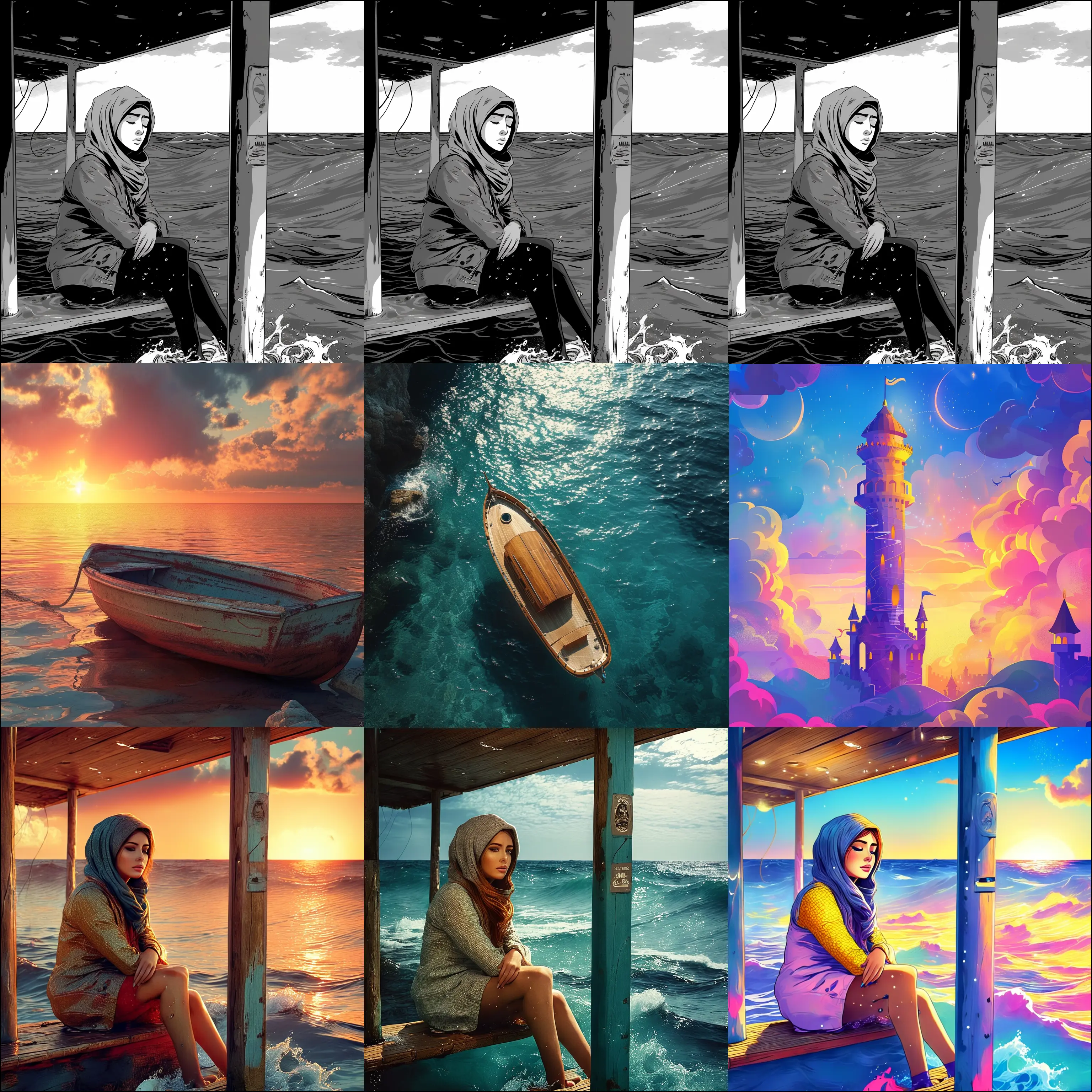ComfyUI Node: Comfyui_gpt_image_1_edit
Comfyui_gpt_image_1_edit
Categoryainewsto/Chatgpt
ainewsto (Account age: 976days) Extension
Comfyui-chatgpt-api Latest Updated
2025-04-30 Github Stars
0.05K
How to Install Comfyui-chatgpt-api
Install this extension via the ComfyUI Manager by searching for Comfyui-chatgpt-api- 1. Click the Manager button in the main menu
- 2. Select Custom Nodes Manager button
- 3. Enter Comfyui-chatgpt-api in the search bar
Visit ComfyUI Online for ready-to-use ComfyUI environment
- Free trial available
- 16GB VRAM to 80GB VRAM GPU machines
- 400+ preloaded models/nodes
- Freedom to upload custom models/nodes
- 200+ ready-to-run workflows
- 100% private workspace with up to 200GB storage
- Dedicated Support
Comfyui_gpt_image_1_edit Description
AI-driven image editing node with text prompts for creative alterations.
Comfyui_gpt_image_1_edit:
The Comfyui_gpt_image_1_edit node is designed to facilitate the editing of images using AI-driven prompts. This node leverages the capabilities of a model, such as "gpt-image-1", to modify images based on user-provided prompts, allowing for creative and dynamic alterations. The primary benefit of this node is its ability to interpret textual prompts and apply them to images, resulting in edited outputs that reflect the user's creative vision. This process is particularly useful for AI artists who wish to experiment with different styles or effects without needing extensive technical knowledge. The node supports various configurations, such as adjusting the quality and size of the output, and can handle multiple images in a batch, making it a versatile tool for image editing tasks.
Comfyui_gpt_image_1_edit Input Parameters:
image
The image parameter is the input image that you wish to edit. It serves as the base for the modifications that will be applied according to the prompt. The image should be in a compatible format and is essential for the node to function, as it provides the visual content that will be altered.
prompt
The prompt parameter is a textual description that guides the editing process. It allows you to specify the desired changes or effects you want to see in the image. This parameter is crucial as it directly influences the outcome of the editing process, enabling you to inject creativity and specific themes into the image.
model
The model parameter specifies the AI model used for editing the image. The default model is "gpt-image-1", which is designed to interpret prompts and apply them to images effectively. This parameter allows you to choose different models if available, which might offer varying styles or capabilities.
n
The n parameter determines the number of edited images to generate. By default, it is set to 1, meaning a single edited image will be produced. Increasing this number allows for the generation of multiple variations, providing a broader range of creative outputs.
quality
The quality parameter controls the quality of the edited image. It can be set to "auto" to let the node decide the best quality settings, or you can specify a particular quality level. This parameter affects the visual fidelity and detail of the output image.
seed
The seed parameter is used to initialize the random number generator, ensuring reproducibility of the results. By setting a specific seed, you can achieve consistent outputs across different runs with the same input parameters.
mask
The mask parameter is an optional input that allows you to specify areas of the image to be protected or focused on during editing. This can be useful for preserving certain parts of the image or applying changes selectively.
api_key
The api_key parameter is used for authentication purposes when accessing external services or models. It ensures that the node can securely communicate with the necessary APIs to perform the image editing tasks.
size
The size parameter allows you to specify the dimensions of the output image. By default, it is set to "auto", which means the node will determine the best size based on the input image and other parameters. You can also set specific dimensions if needed.
clear_chats
The clear_chats parameter determines whether to clear the conversation history after editing. By default, it is set to True, which helps maintain a clean state for subsequent operations. Setting it to False retains the history, which can be useful for tracking changes over time.
Comfyui_gpt_image_1_edit Output Parameters:
combined_tensor
The combined_tensor is the primary output of the node, representing the edited image(s) in a tensor format. This output is crucial as it contains the visual data that reflects the applied changes based on the prompt and other parameters.
response_info
The response_info output provides detailed information about the editing process, including the number of images edited, the prompt used, the model applied, and other relevant settings. This information is valuable for understanding the context and specifics of the editing operation.
conversation_history
The conversation_history output contains a record of the interactions and prompts used during the editing session. This history is useful for reviewing past edits and understanding the evolution of the image modifications.
Comfyui_gpt_image_1_edit Usage Tips:
- Experiment with different prompts to explore a wide range of creative possibilities and effects on your images.
- Use the
maskparameter to protect specific areas of the image that you do not want to be altered during the editing process. - Adjust the
qualityparameter to balance between processing speed and the visual fidelity of the output image. - Utilize the
seedparameter to reproduce specific results, which is helpful for iterative design processes or when sharing results with others.
Comfyui_gpt_image_1_edit Common Errors and Solutions:
No edited images in response
- Explanation: This error occurs when the node fails to generate any edited images based on the provided input parameters.
- Solution: Ensure that the input image and prompt are correctly specified and that the model is functioning as expected. Check for any issues with the API key or network connectivity that might affect the node's ability to process the request.
Comfyui_gpt_image_1_edit Related Nodes
RunComfy is the premier ComfyUI platform, offering ComfyUI online environment and services, along with ComfyUI workflows featuring stunning visuals. RunComfy also provides AI Playground, enabling artists to harness the latest AI tools to create incredible art.


